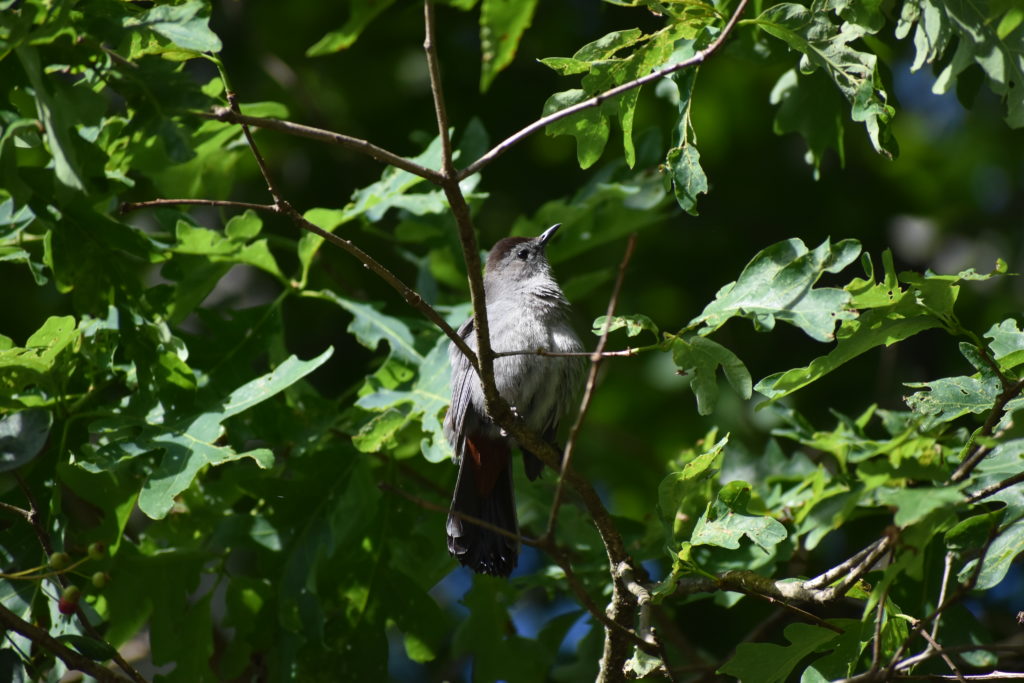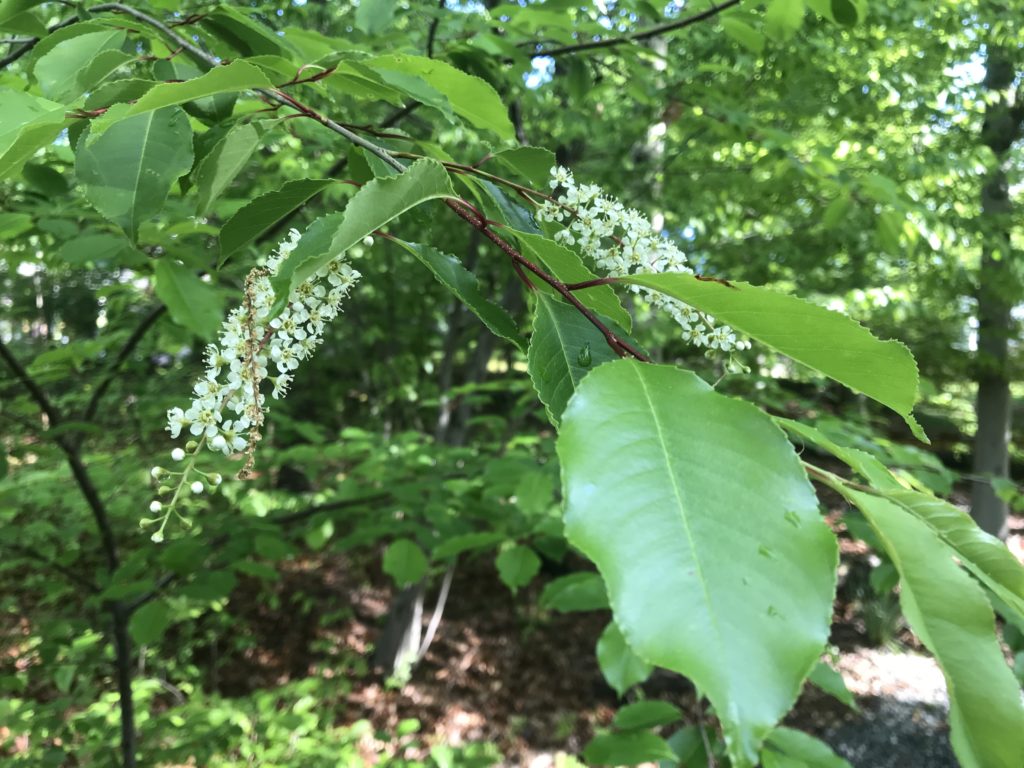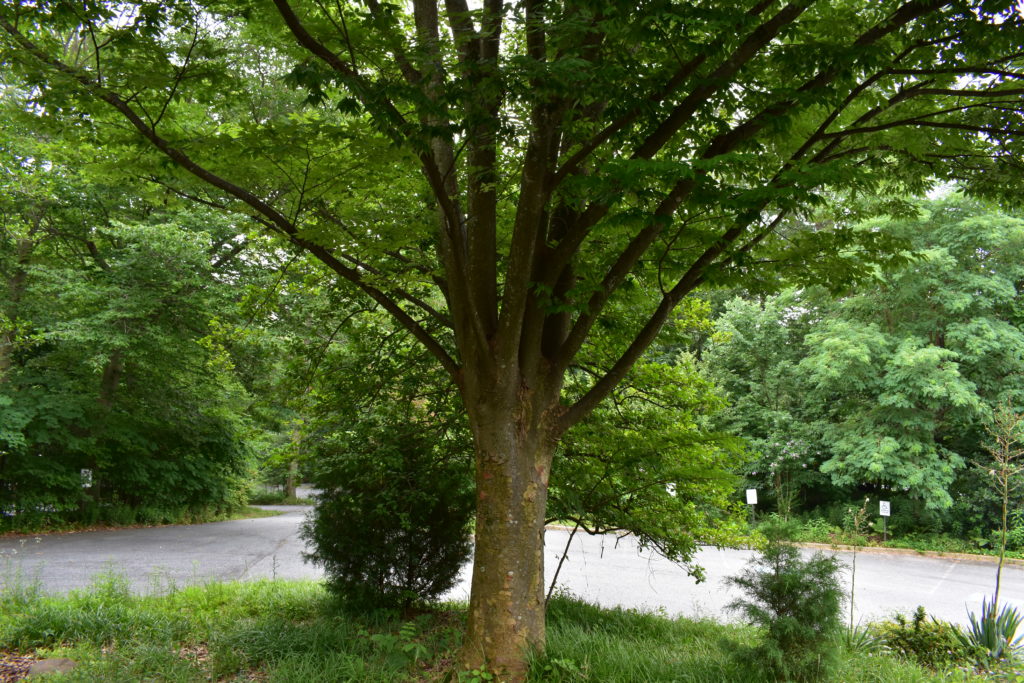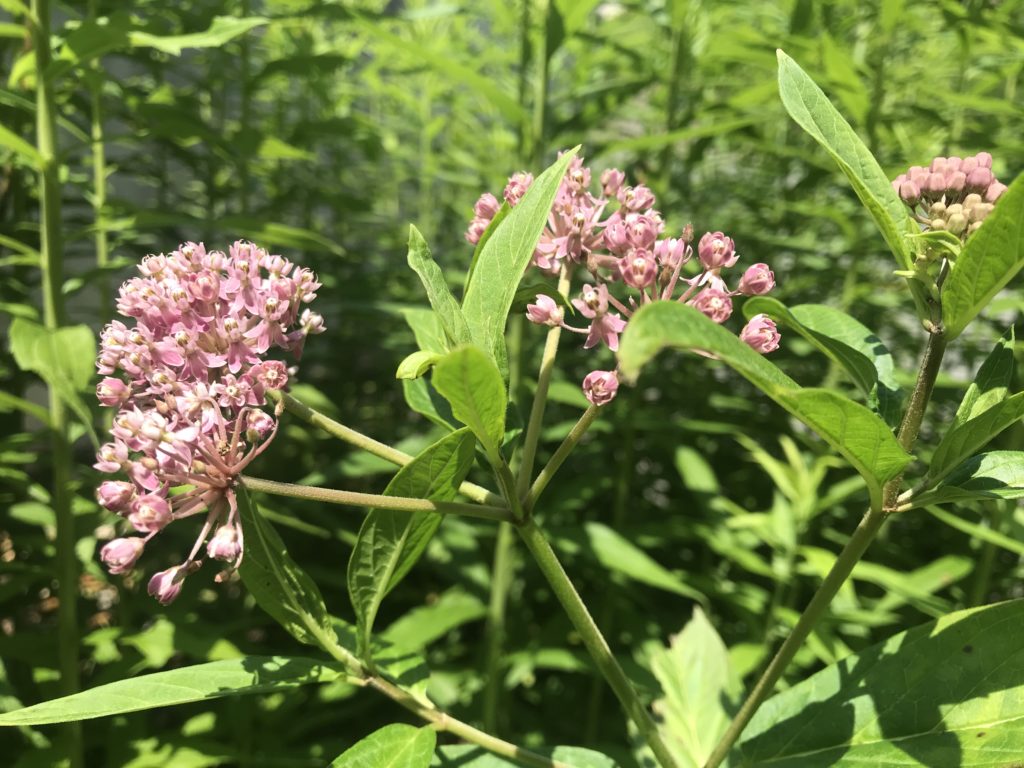Hi River Roaders,
Every now and then I read a book that sparks an “a-ha” moment that explains something I have always wondered about or that ties things together. In this week’s blog, I provide a mini-book report on just such a book (really two books) that helped me better understand the interdependent web of all creation.

The first book is written by Douglas W. Tallamy, who is professor and chair of the Department of Entomology and Wildlife Ecology at the University of Delaware. Based on years of research, the book explores the relationships between plants, insects, and the birds that eat the insects or plants.

Many of us provide seed to help our local bird populations, especially in winter. However, if you want to help nesting birds, according to Tallamy, the best thing you can do is to plant Oaks or other native plants that will provide the caterpillars that are the primary food that many adult birds feed their young. For example, the Catbird above was often found in a large Oak near the Fellowship Hall.

Tallamy notes that 5% of our native plants provide 75% of the caterpillar food that drives food webs. The best woody plants include Oak (over 500 caterpillar species supported), Willow, and Cherry (over 450 species each). The photo above is a black cherry tree beside our upper parking lot from May of this year.

The book also addresses the lack of “ecosystem services” provided by most non-native plants. For example, the Japanese Zelkova tree on our front plaza (photo above) does not support any caterpillars. Tallamy describes a study that shows, compared to native landscapes, yards dominated by non-native plants produce 75% fewer caterpillars, were 60% less likely to have breeding chickadees (the specific bird studied), and with 30% less nesting success.

A key take-away is that most insects that eat plants develop and reproduce only on the plants where they share an evolutionary history. A great example is our native milkweed, which is non-palatable to most insects but is the only food for Monarch butterfly caterpillars.

The book helped me understand that the likely reason I found the above Mourning Cloak butterfly on our grounds is that one of it’s two host plants is the Hackberry tree, which is very common on our grounds. It’s surprising how many butterflies/moths only have a single species of plant that their caterpillars can eat.

The second book, Nature’s Best Hope, is also by Tallamy. It is a call to action that proposes that homeowners/landowners manage their land as a contribution to a “Homegrown National Park”, since our existing protected lands are not adequate to maintain healthy ecosystems. He describes ten steps many of us can take:
- Shrink the lawn
- Remove invasive species
- Plant keystone native plants
- Increase the abundance and diversity of our plantings
- Plant for specialist pollinators
- Network with neighbors
- Build a conservation hardscape
- Create caterpillar pupation sites under trees
- Do not use insecticides, herbicides, or fertilizers
- Educate your homeowners association
I try to apply these practices in the management of our grounds at RRUUC and also at home. This year, our Bethesda yard had successful nests for Phoebes, Carolina Wrens, Robins, Chickadees, Red-Bellied Woodpeckers, and likely other bird species. Our small pond produced Leopard and Bull Frogs, while our Milkweed patch hatched multiple Monarch butterflies.
I heartily recommend these books. There are also multiple lectures by Tallamy available on YouTube where he does a much better job explaining these concepts than I can in a short blog.
That’s all for this week. Next week: Winter Solstice!
Joe
